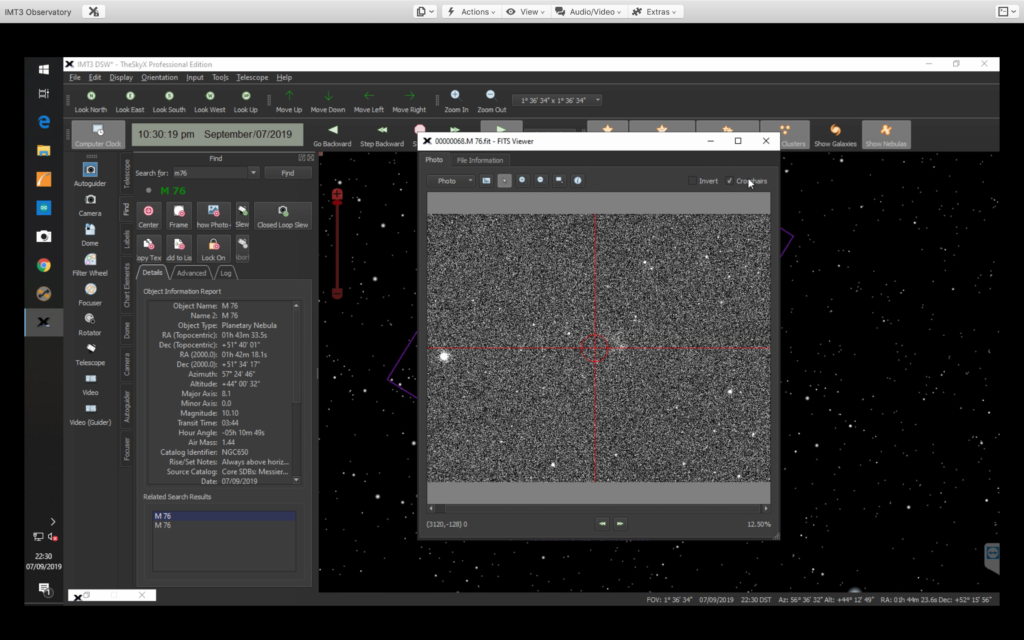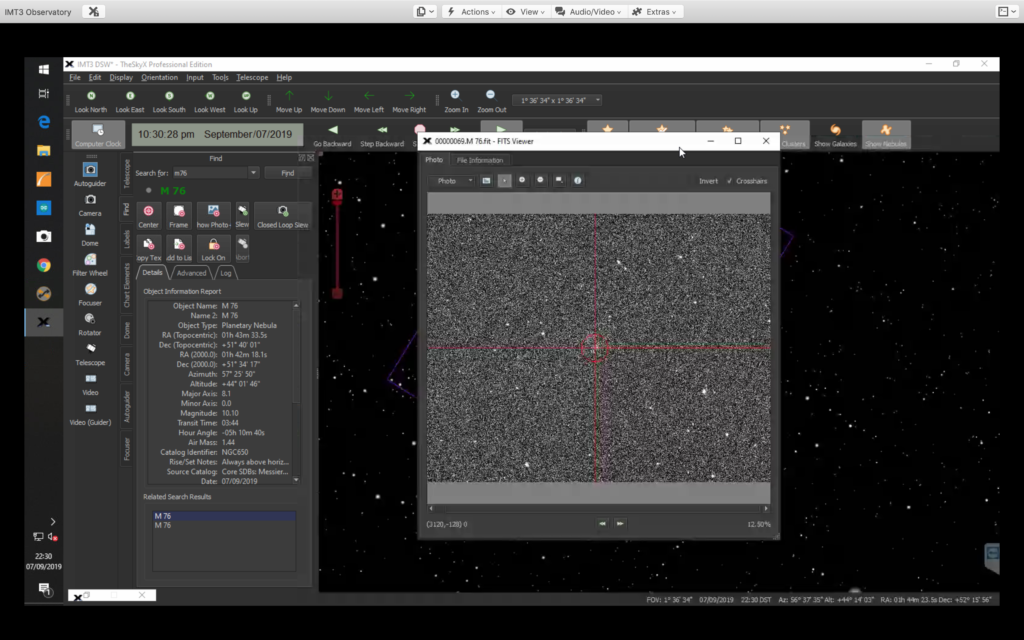Viewing time period – 20:43 – 04:32
First thing to say is this is a very long blog, much went wrong tonight before it went right and thus I selected to record as much of the problems here as evidence later if I have the same problem or others indeed do. Tonight I am imaging M76 a planetary nebula in Perseus known as the Little Dumbbell. This is my first real object to image through the IMT3’s 12″ scope. The weather looked good and a quick look through the All Sky Camera showed a clear sky with Vega shining bright overhead and a slight glow with the Sun still setting to the West.
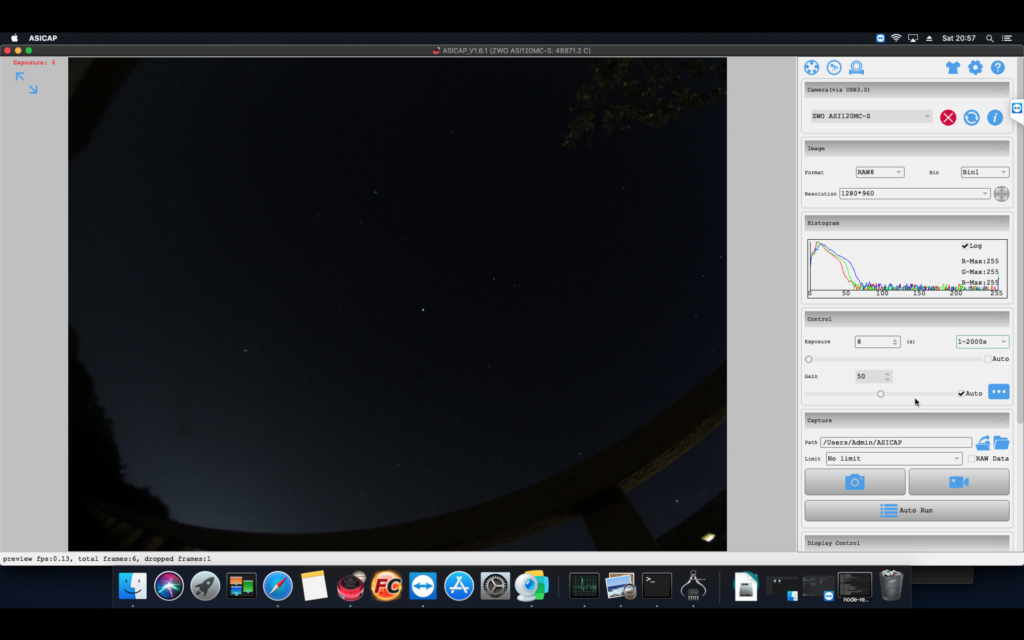
The first thing I needed to do was to slew to a bright mag +2 star, in this instance Caph in nearby Cassiopeia and centre and sync the scope which I did through TheSkyX (TSX). I then slewed to a magnitude +9 star (SAO 21164) nearby so that I could perform an autofocus through the OIII filter using SGPro. The best fit was 73,914.
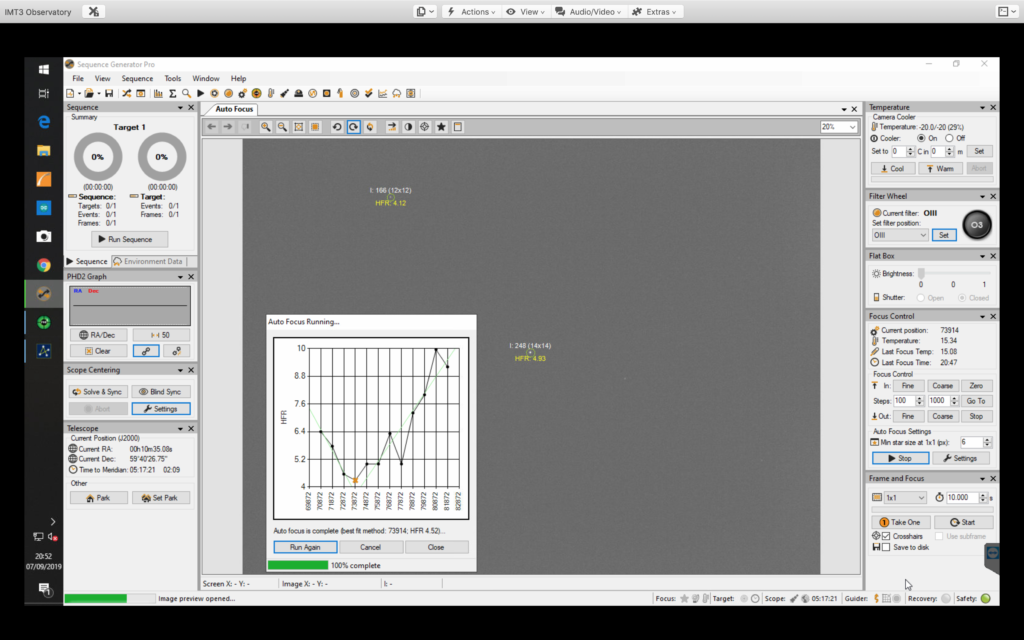
I then took a single 60s exposure just to make sure the focus was right, the stars coming in at around Half Flux Radius (HFR) 4. Meanwhile the camera cooler was running at -20℃ and 28% so I lowered to -28℃ at 60%. It should be noted that every time I perform a closed loop slew in TSX and the camera connects, the camera then looses the information of its status in SGPro and the only way to resolve to disconnect and reconnect. I again will note this is the TOSA User Guide.
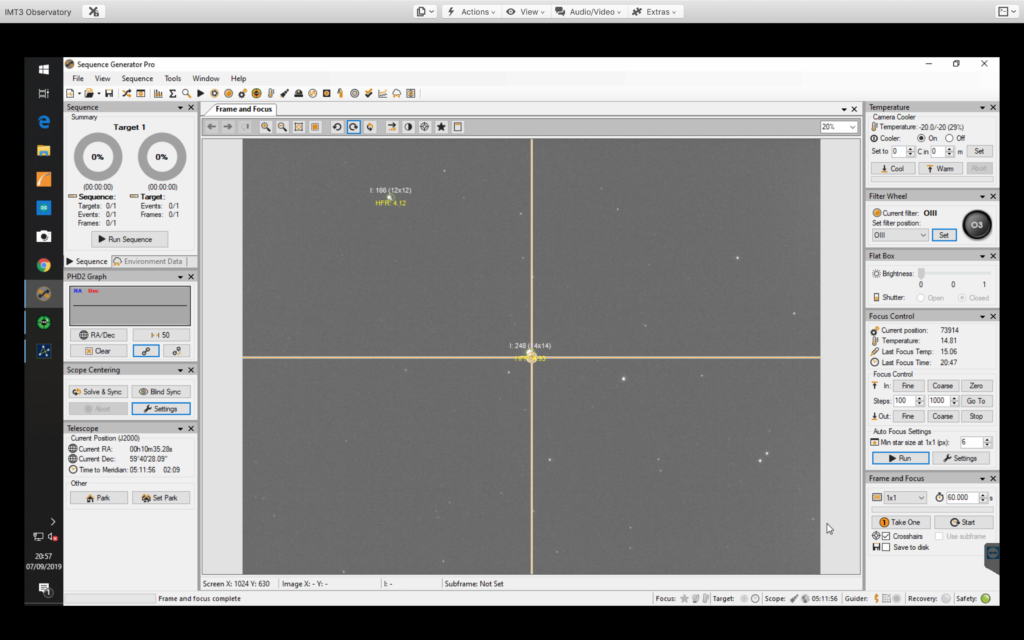
Then I slewed to M76, which on first inspection was still being my neighbours house. So I waited for a while longer and around 21:10 it appeared above the roof for its polar orbit around Polaris. I took a quick image with SGPro of 60 seconds through the OIII filer to see where I was pointing, given I only have a 60 point TPoint model (I need 300 for the best pointing accuracy).

So given I was slightly out I selected the Luminance filter, went back to TSX and performed another Closed Loop Slew and then synced the scope for good measure. The resulting image through TSX and then through SGPro showed a perfect improvement.

Before imaging I went back to look at the PEC as Bob had mentioned not being able to image for very long on the Tak FS102 after we had taken it off, added the adjuster plate, reattached and added some weights. Not surprisingly the TPoint model will need redoing, however I noted the PEC was turned off, maybe I had not saved the last time I enabled. So I reenabled and saved.
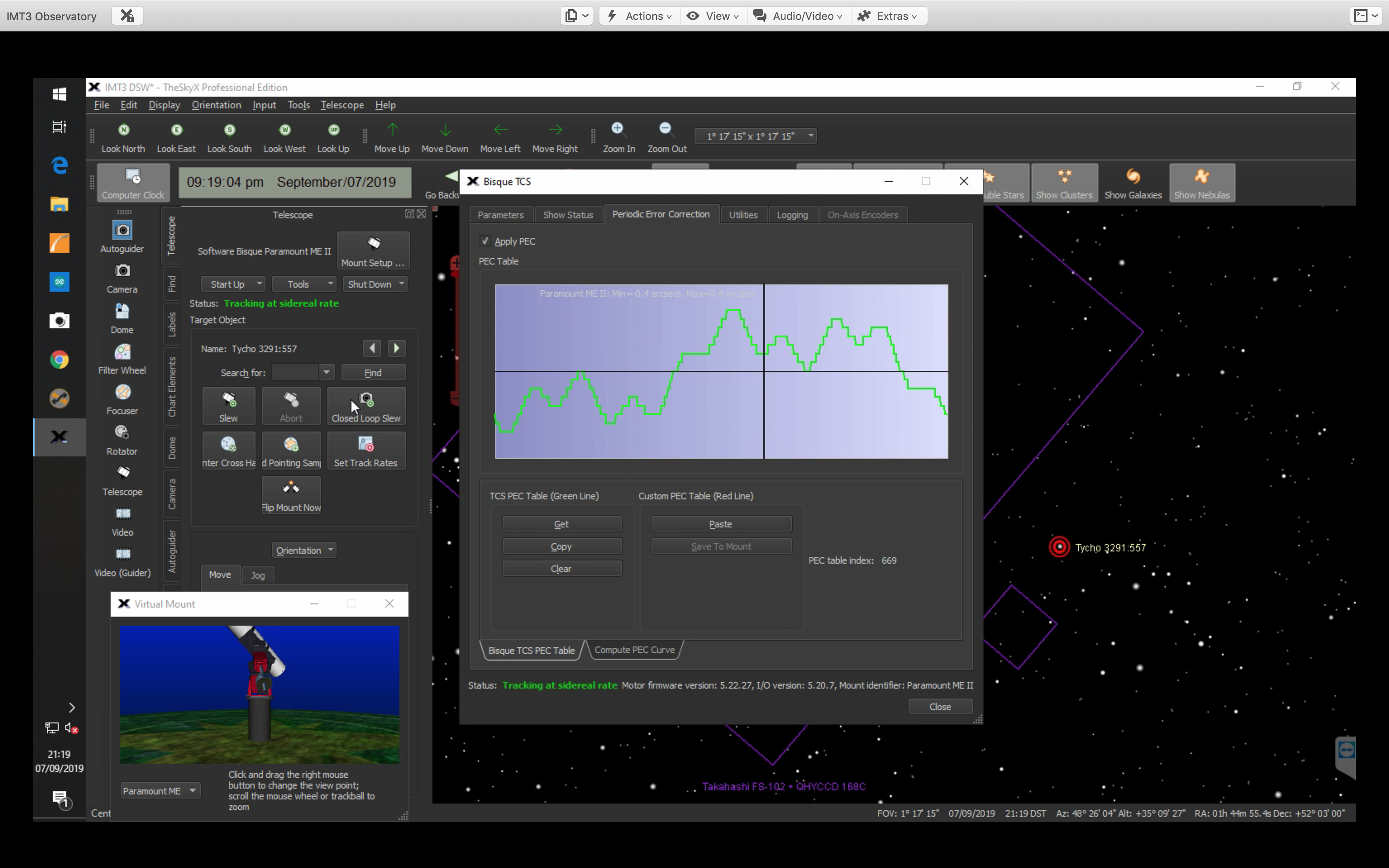
I then went looking for a guide star with PHD2, however even with 10 seconds I could not see one. I looked at TSX and indeed the Field of View (FoV) indicator for the guider showed a fairly barren piece of sky with barely a magnitude +11 star visible.
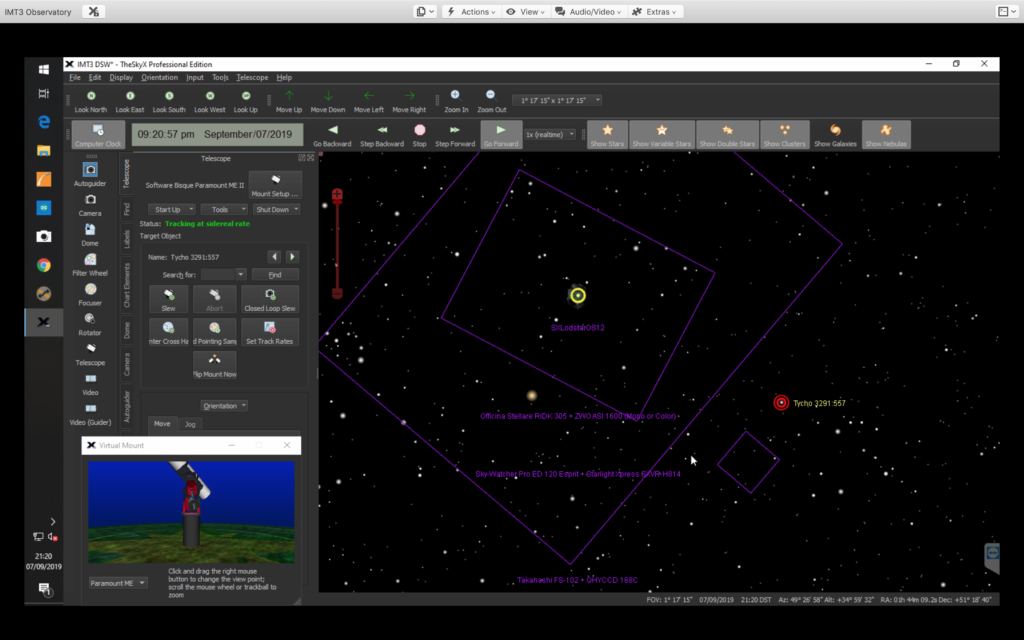
Guider FoV – bottom right square is fairly limited in stars 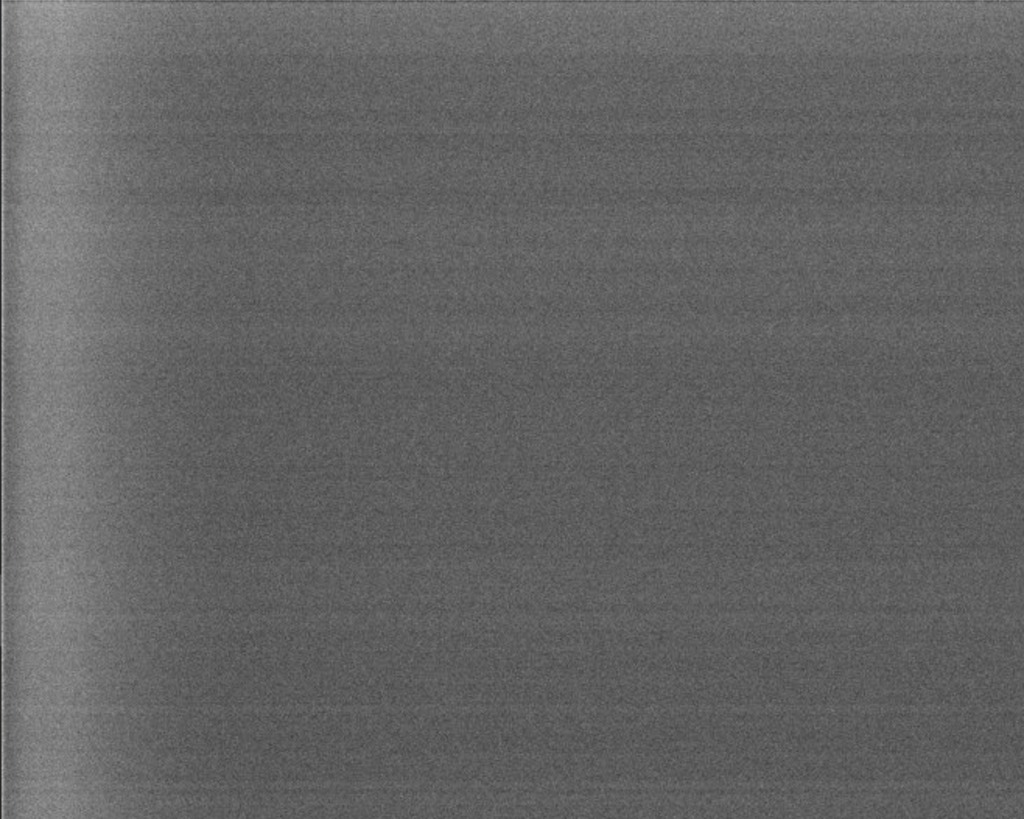
Blank guider image …..
I performed a quick check of the SQM and it was reading 19.37 and the Hitec Weather station had a reading of around 25 meaning between Haze and Clear. Another quick check of the ASC and that was showing clear. So either I had to move the scope to find a guide star or I could image without guiding……so the only way to tell was take a quick 5min image and see what it looked like.
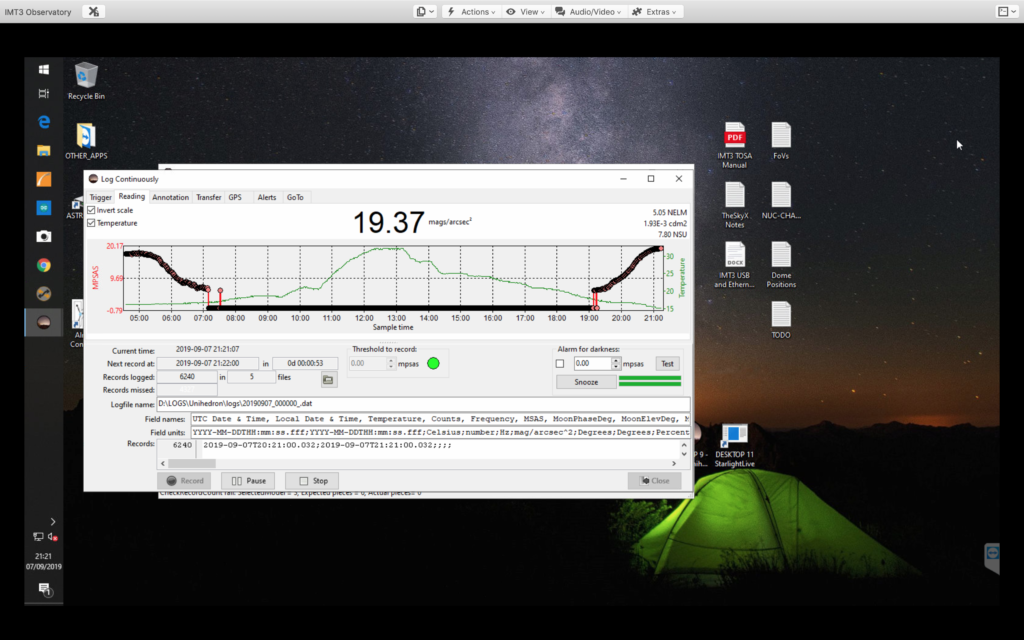
SQM reading 
Hitec Astro Weather Station 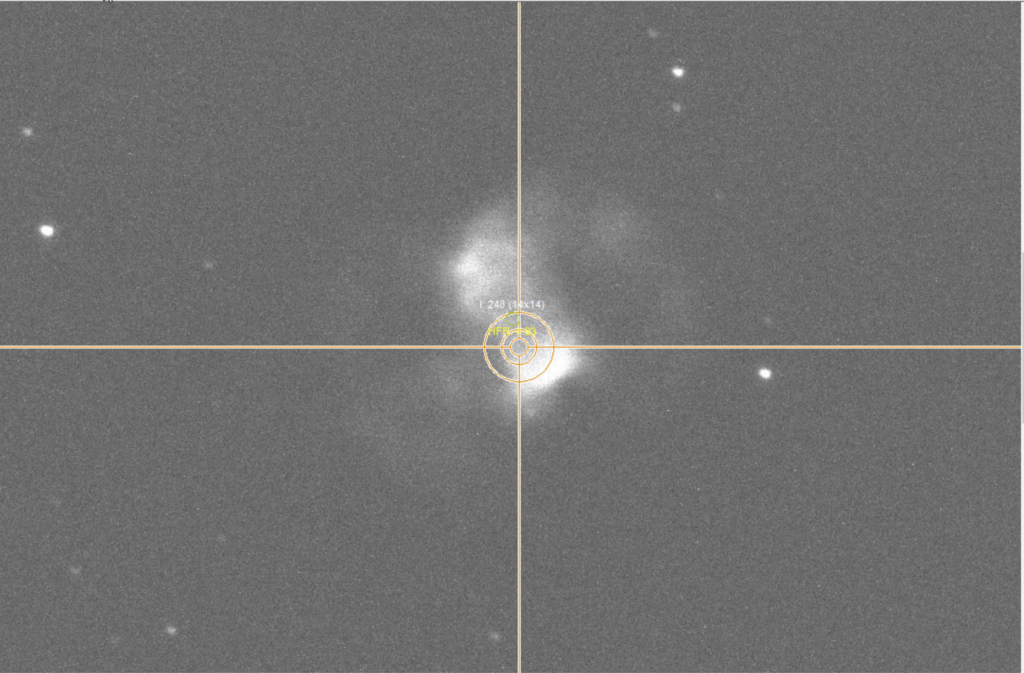
Trailing stars
As suspected the resulting 5min image showed trailing, not surprising given the TPoint model is out so I decided to guide. I slewed around trying to find a decent guide star but nothing came up, literally nothing, which then got me thinking this was not right. So I checked a bright star in the FoV for the guider, still nothing. So I then disconnected the camera and checked the settings and there it was, the setting was for the SX814 which was not powered on (aka GingerGeeks main camera on the Epsrit 120) so I changed this to the Lodestar and took another image, this came into view! Not sure the problem of why it keeps reverting to the SX814 but I will need to check each time and will add to the TOSA User Guide.
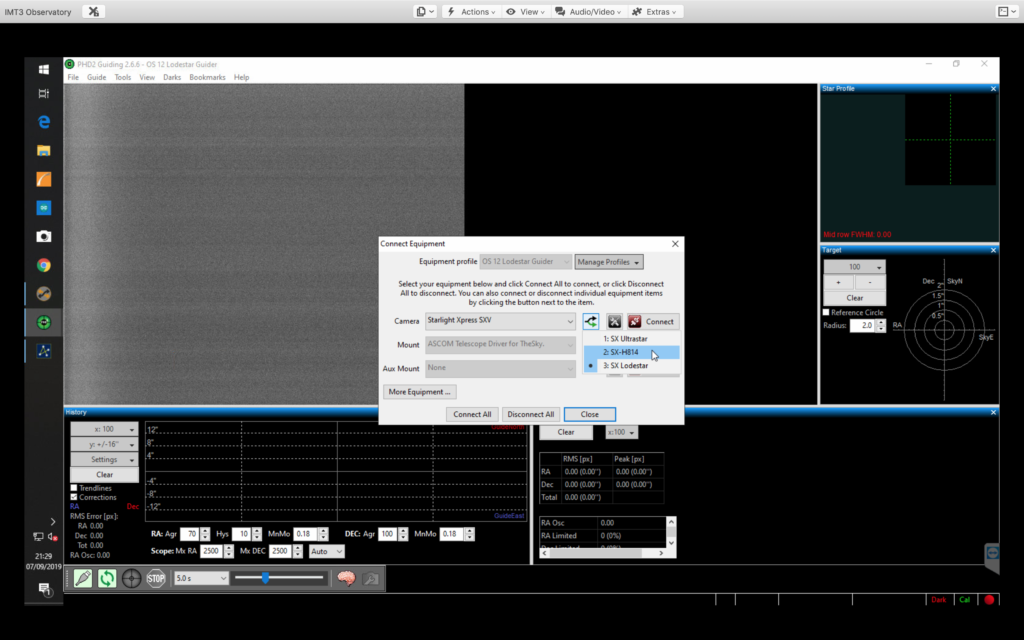
So I moved back to M76 entering with TSX again and took an image for guiding through PHD2 and full of stars, well a handful at any rate, plus a load of hot pixels (I need to apply some darks).

The resulting guider graph was smooth, too smooth, and the resulting 5 min image was trailed! Ok so something else not right, so after taking a look it turned out I had selected a hot pixel to guide on, so I exposed a little longer from 5s to 10s and selected what looked more like a star and this time tried to guide. The guiding went off the chart which proved this was a star and that I needed to calibrate the guider (seemingly every night I go out, I will need to see if that is right). So off I went to calibrate the guider.

Guiding too flat… 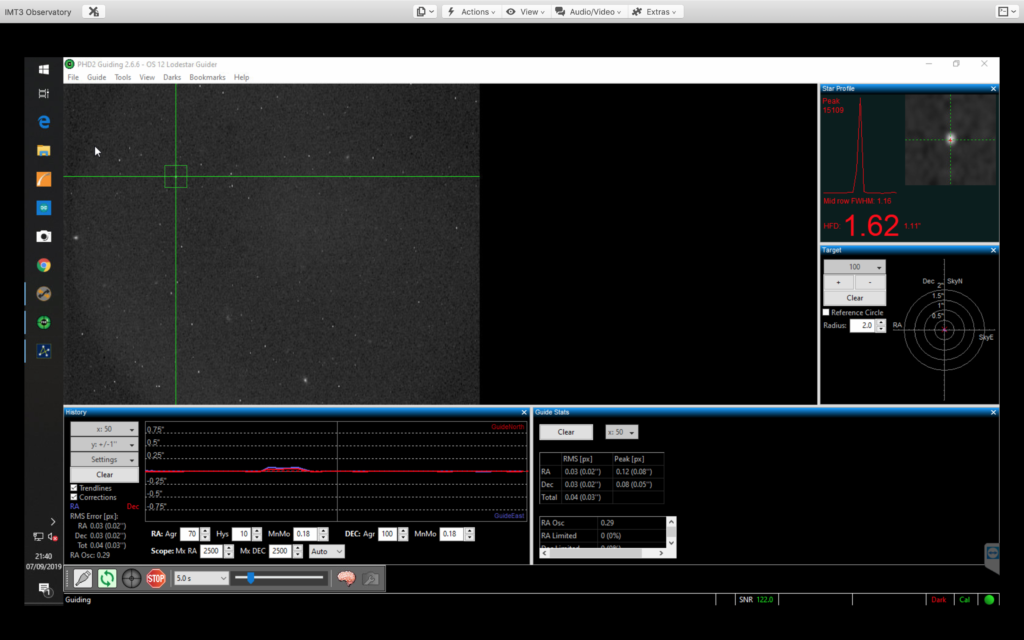
Hot pixel not a star! 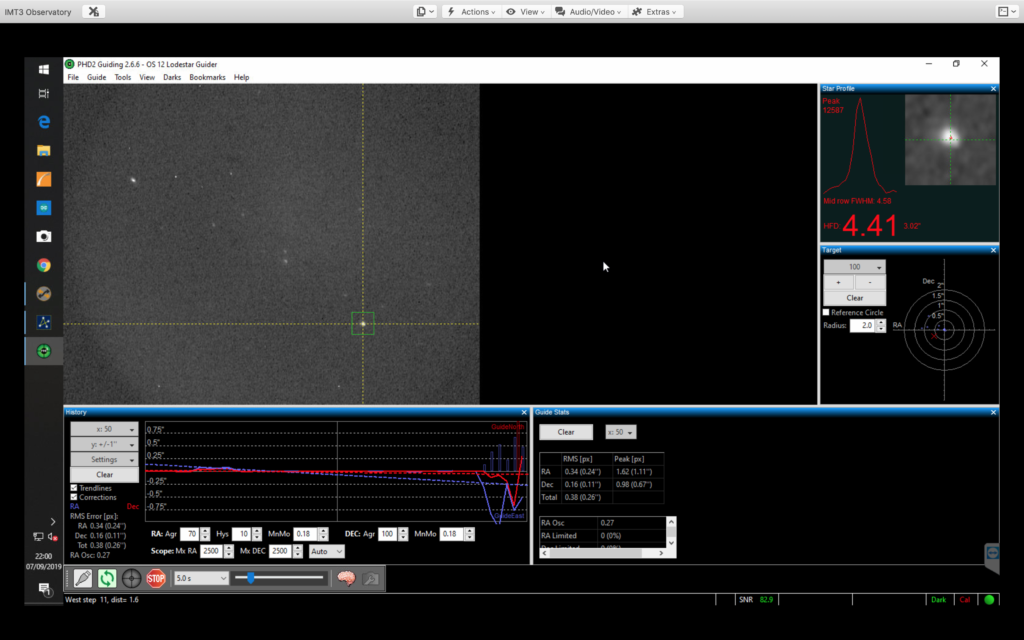
Finally a star but guiding off the chart!
In calibrating I realised the Darks were going to be needed, the first calibration run failed. I then went out to cover the scope using my trusty chair to help with the lift I needed to reach the end of the 12″ as it was point upwards. I then went back inside and took a set of darks ( I thought I had done this before), anyway with a new dark library in hand I recalibrated the guider.
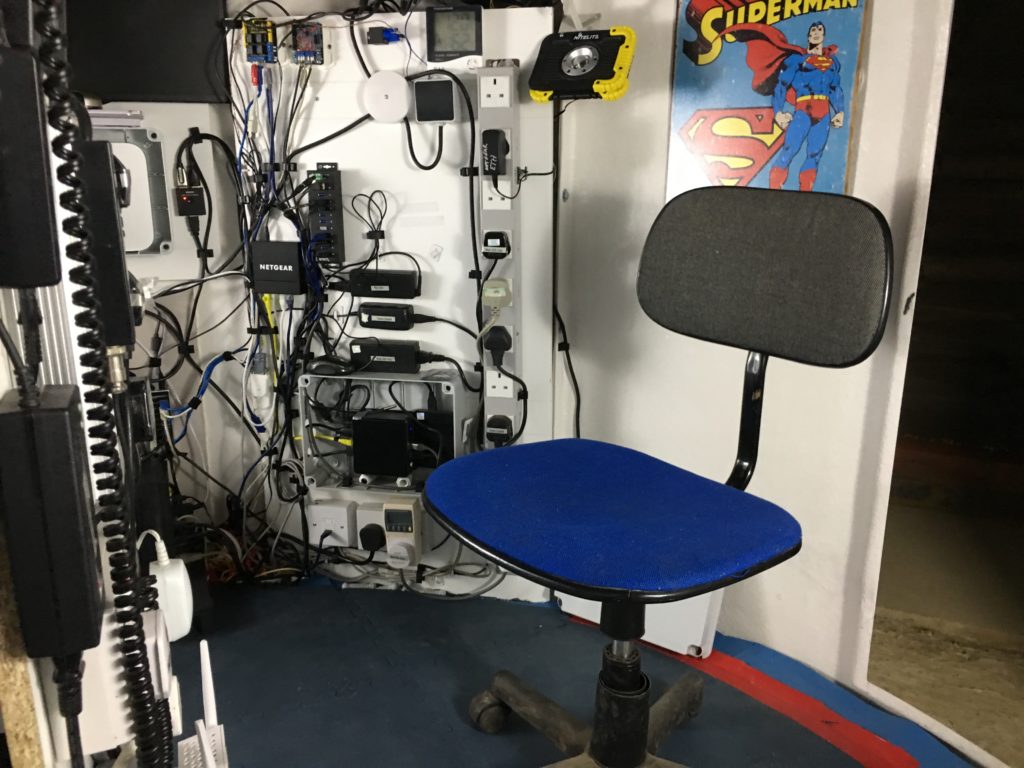
Makeshift ladder…do not try this at home 🙂 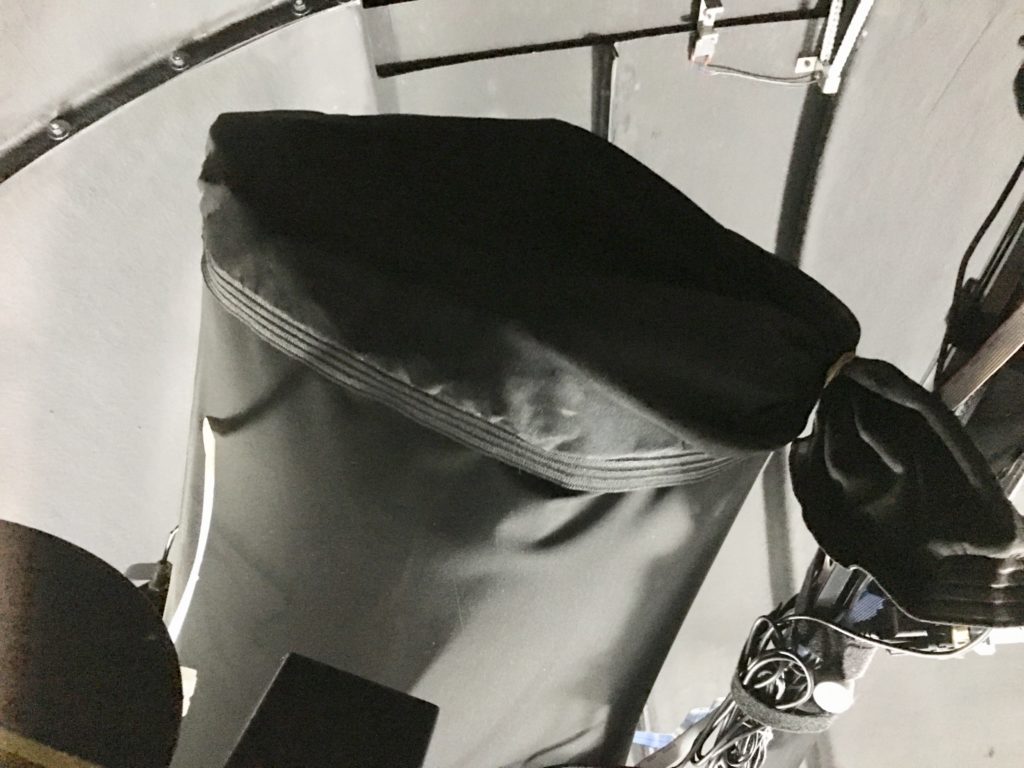
Cover on scope for guider darks 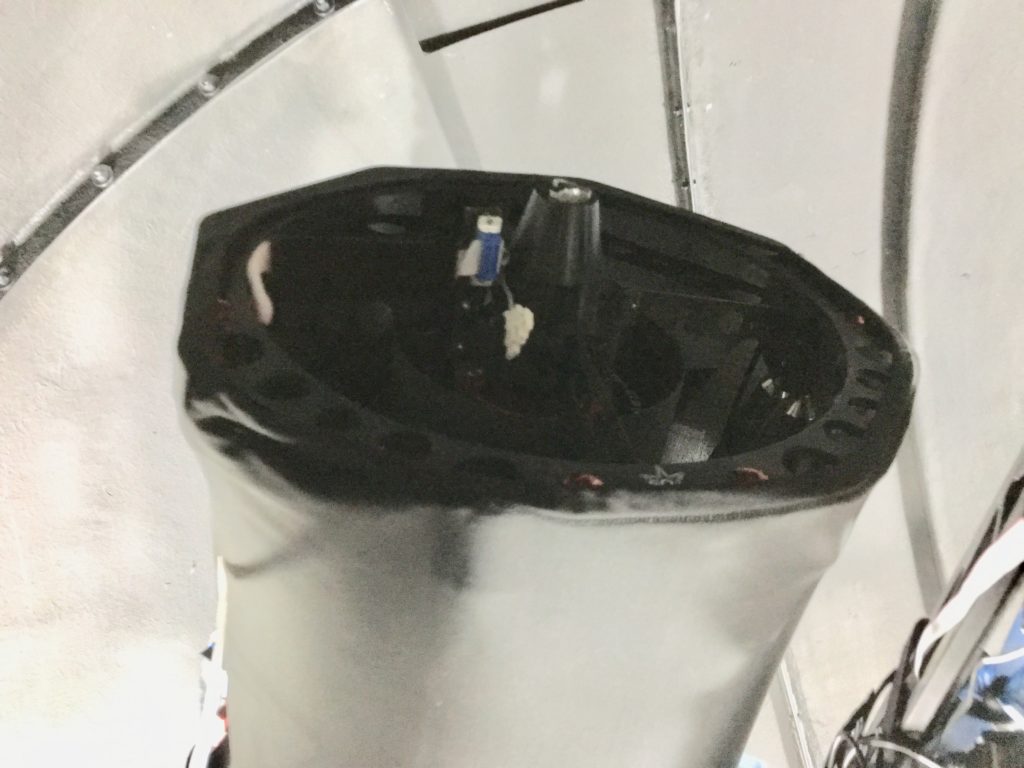
Cover off scope
Now suffice to say the problems did not stop there, I had guider calibration failed, star did not move enough and after 4 attempts I managed to calibrate the guider and the guiding then started at last! the main thing was to change the number of steps required to 6 and the pulse time changed then to 1500ms from 200ms. This was enough to resolve the problem.
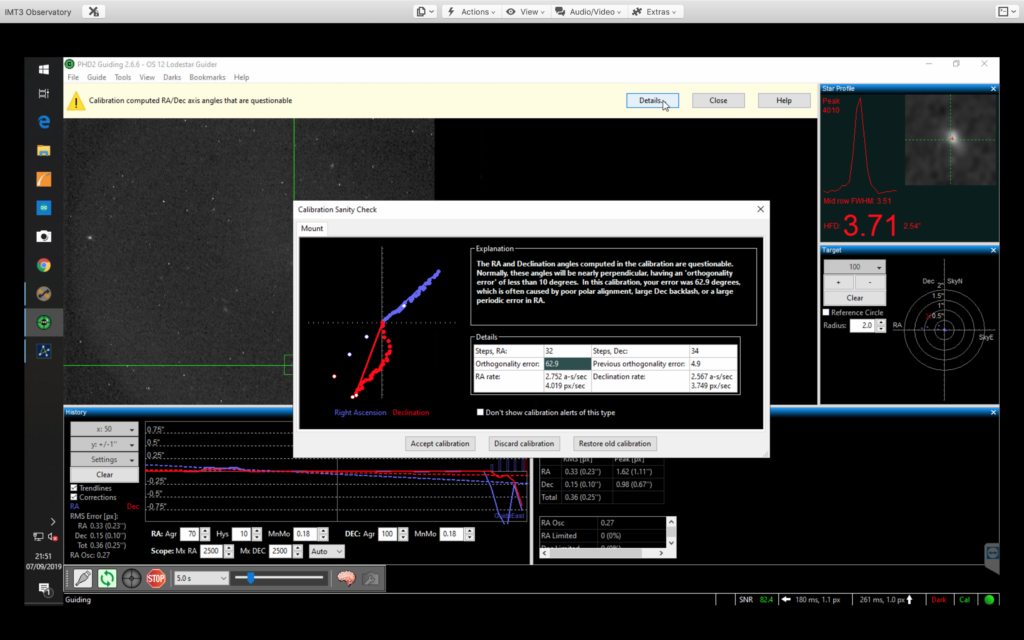
Guider RA and Dec are Questionable!!! 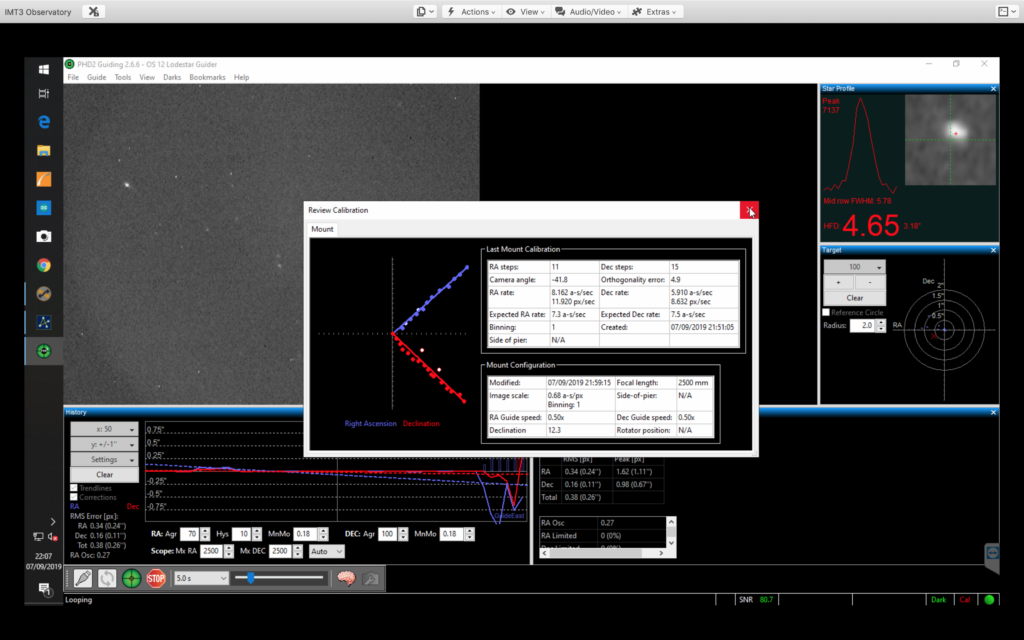
Guider calibration stars did not move enough 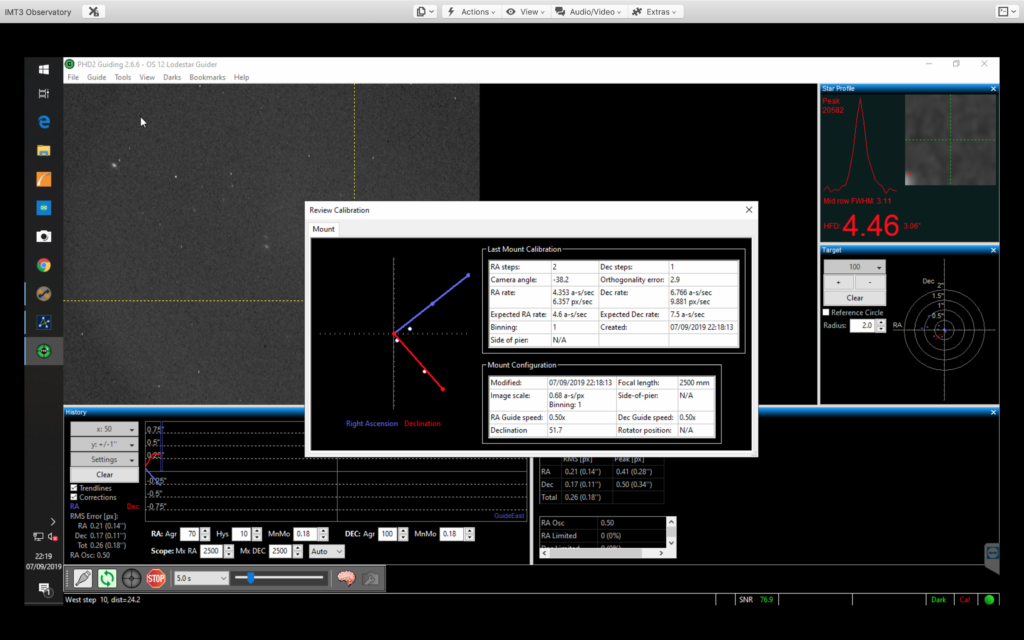
Guider calibration not enough points 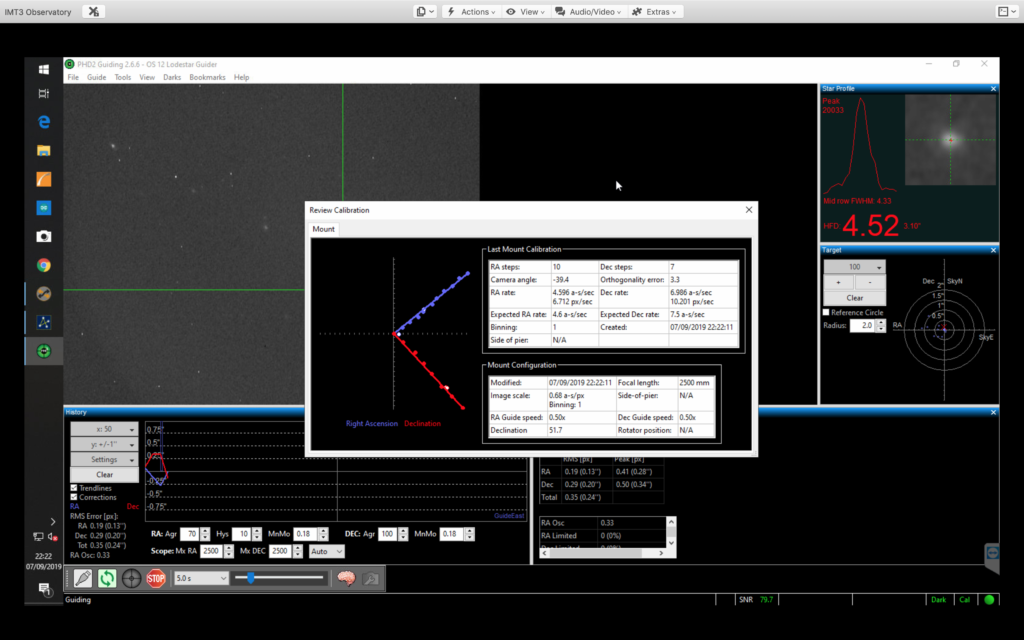
Finally guider calibration successful 🙂
For completeness here are the settings I am now using that work in PHD2
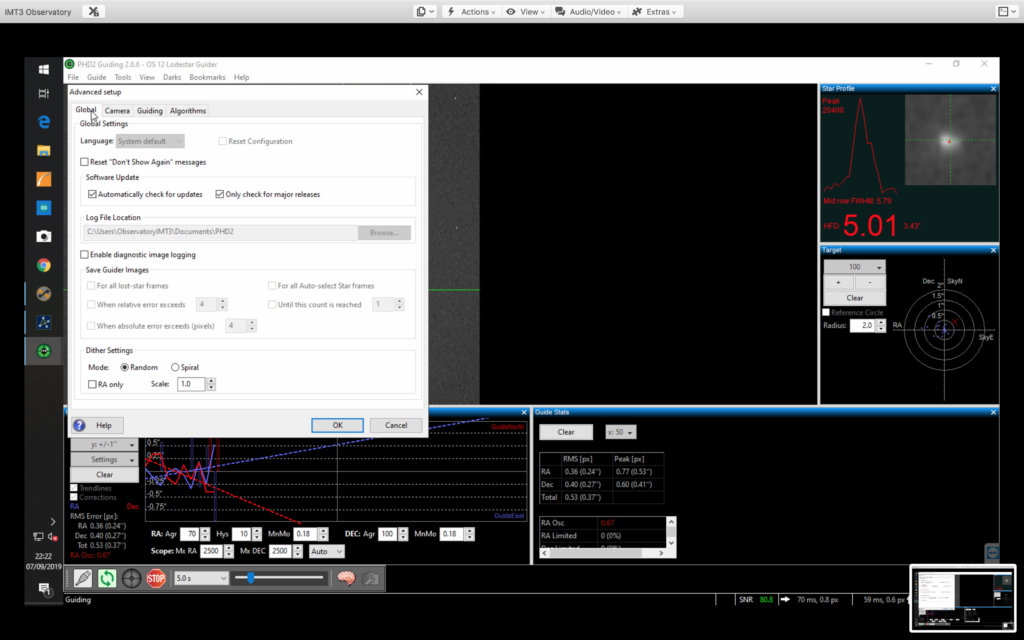
Correct guider settings 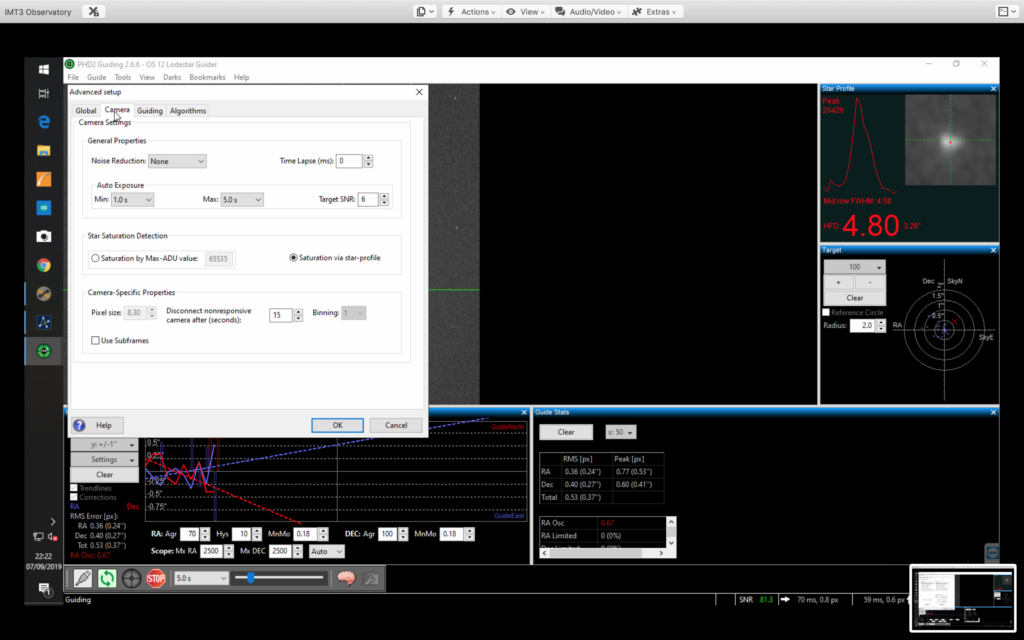
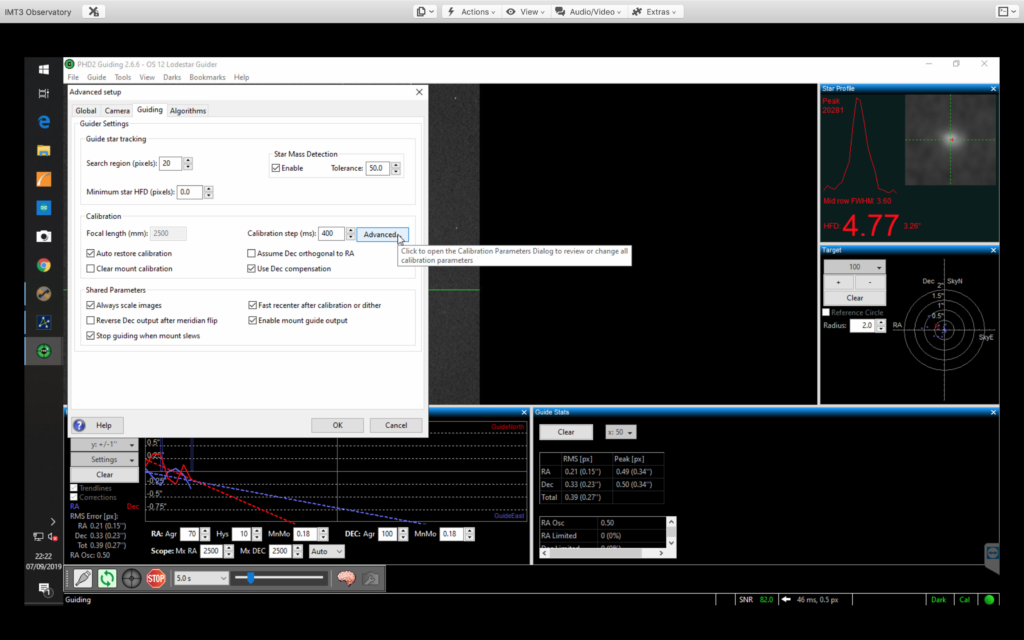
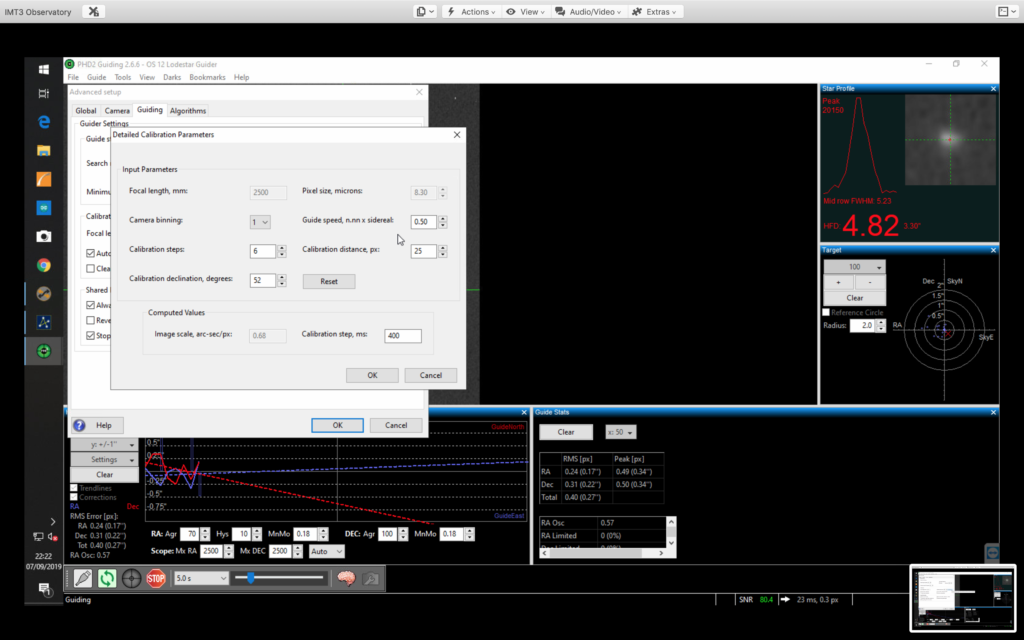
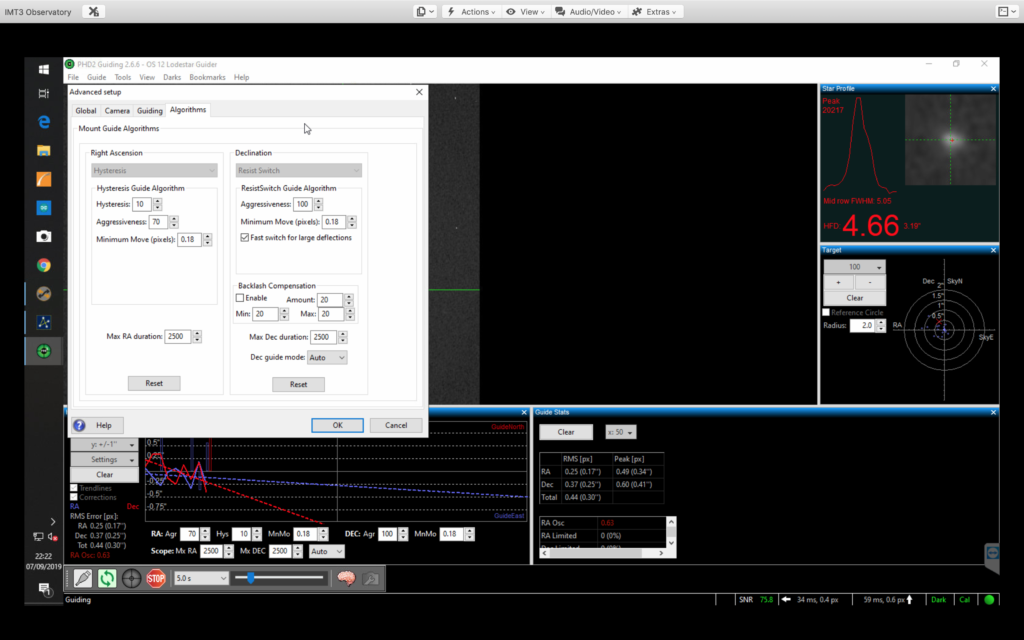
So after much time spent and it now being precisely 22:33 I realigned M76 in the centre as it had moved with all the calibration challenges (remembering to change the filter to Luminance during the Closed Loop Slew in TSX and then back to OIII to start my imaging run.
I tested at 2 minutes first, then 5 minutes, then 20 minutes before starting the final run to decide on the subs I would use. By 23:14 I had the 20 minutes sub and settled on 20 minute subs for the rest of the night.
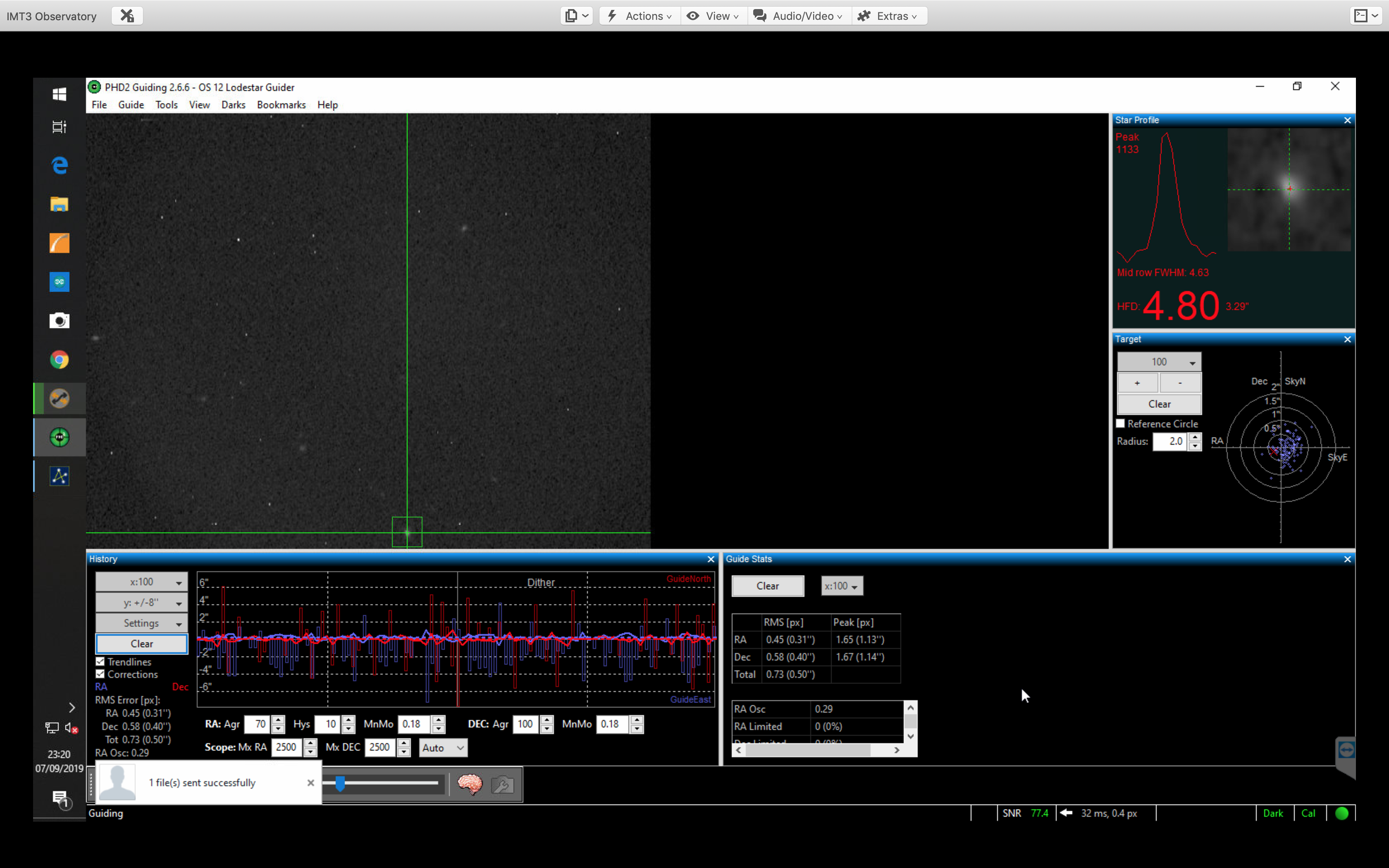
Guider graph looking very smooth 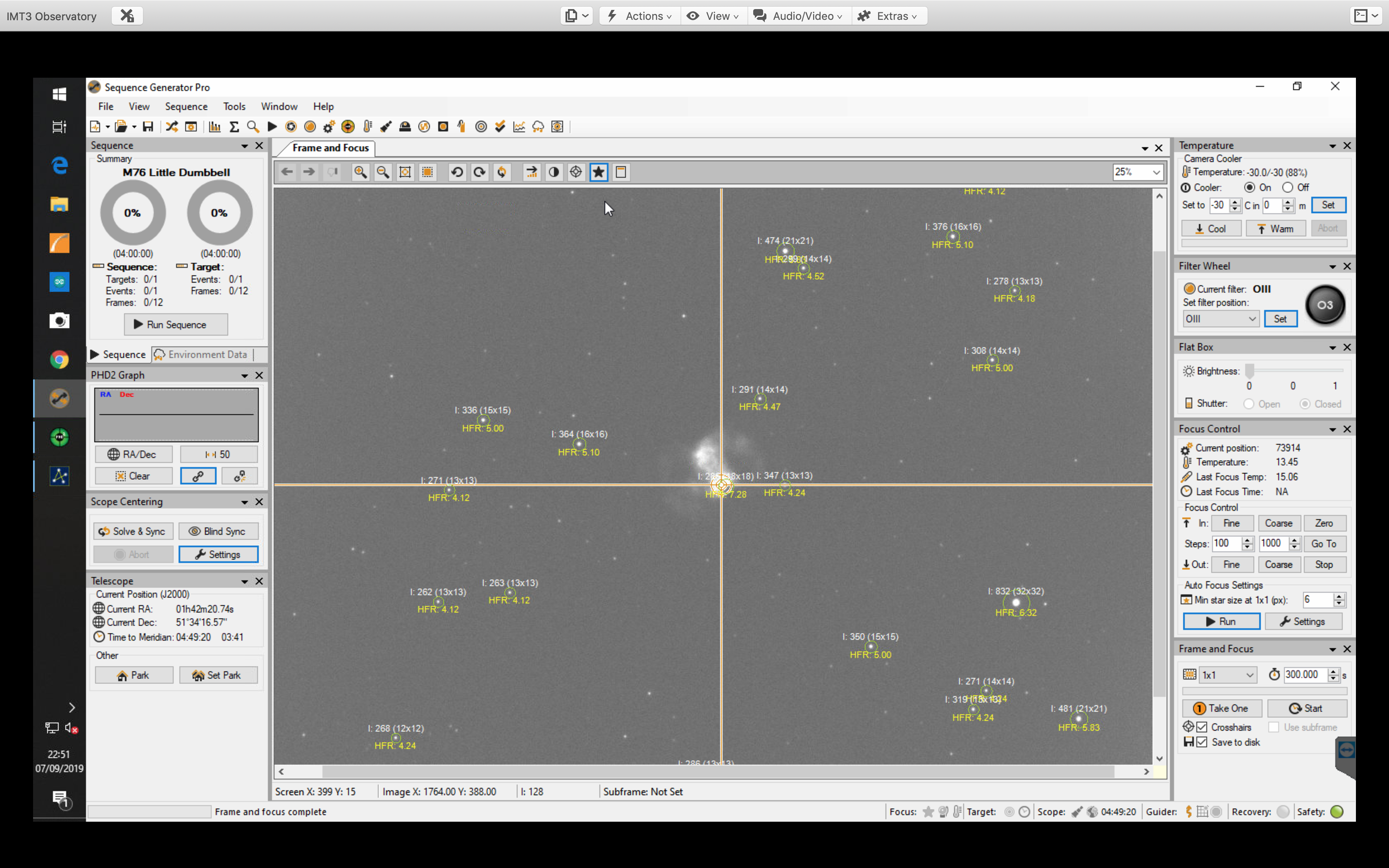
First 20min sub image down and fairly tight stars for my focal length and OIII 
Quick stretch of M27 single sub in PixInsight 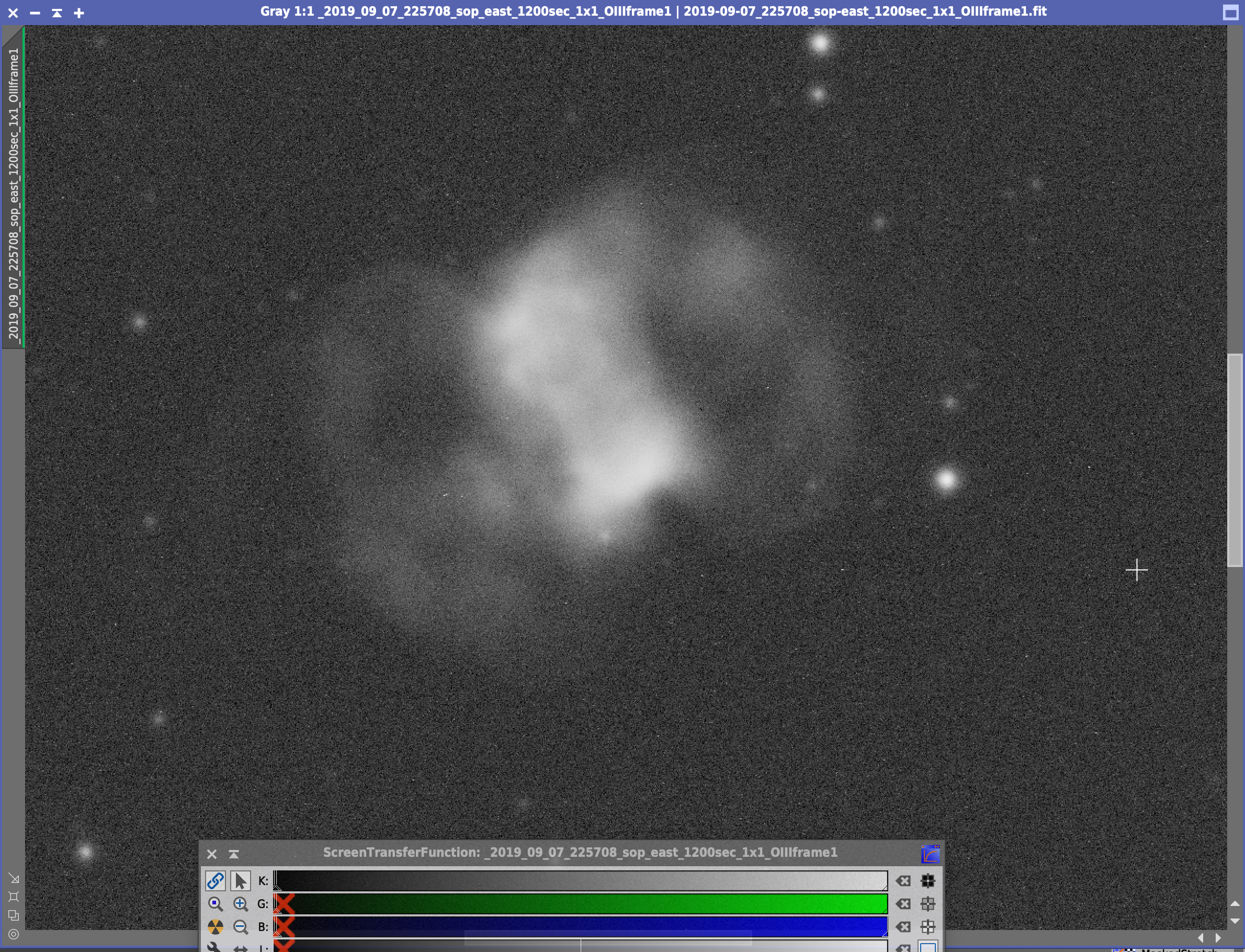
M27 zoomed section single 20min OIII Sub
Meanwhile the Summer Triangle of Deneb, Vega and Altair could be seen through the ASC and I noted that the star Tarazed in Aquila next to Altair at magnitude +2.7 could be seen also.
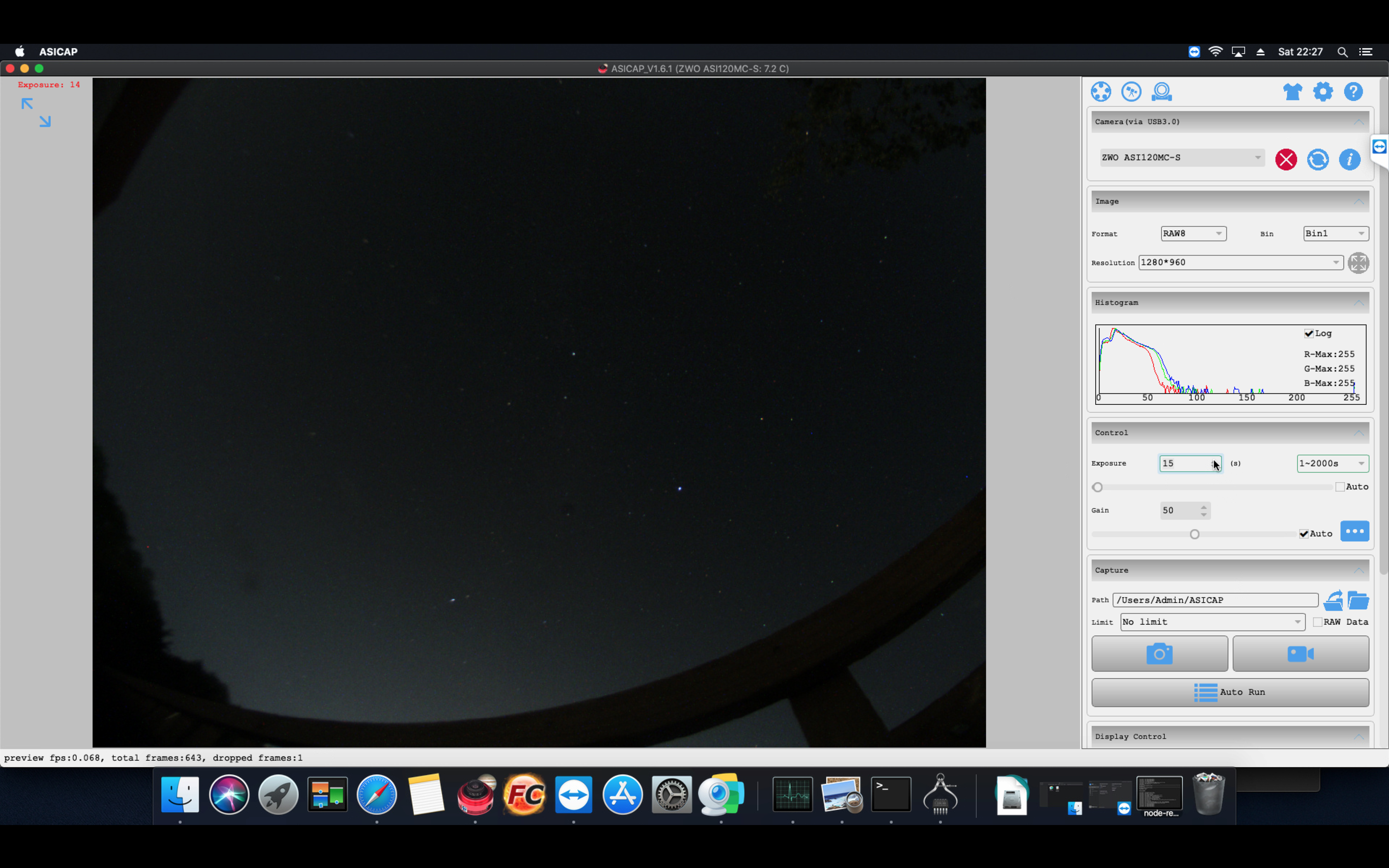
I noticed the trellis lit up and had a quick word with my daughter to close the blind in the bathroom 🙁
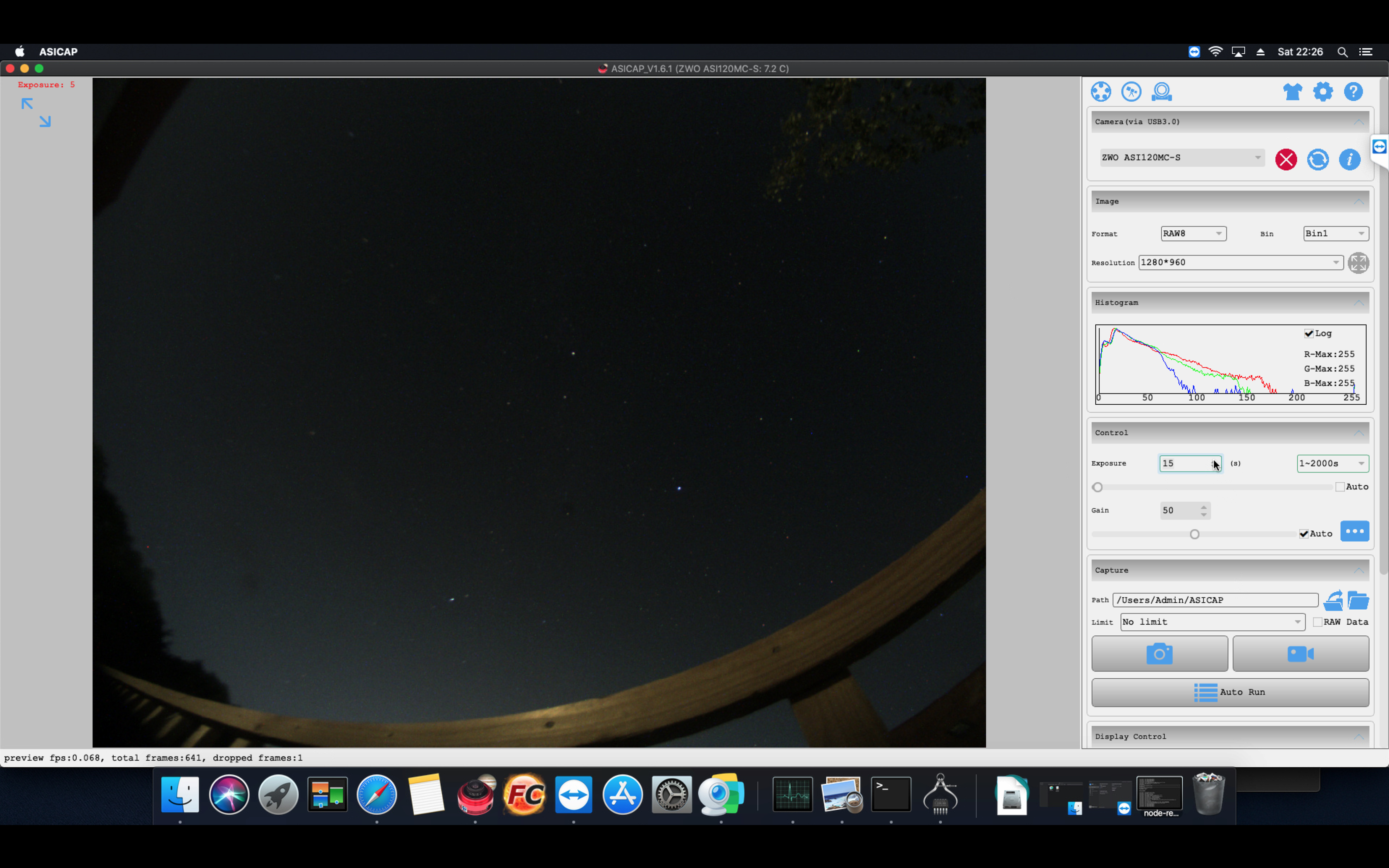
Here is the temperature and pressure information from the dome internal sensors at around midnight.

At 03:49 I decided to do a quick autofocus to see if the focus had changed during the night and given the temperature outside was now around 5℃. I paused the current sequence which gave me the option of cancelling or pausing at the end of the current image. I then ran autofocus but no stars were found. I went into the setting for autofocus within SGPro and changed the exposure time for the OIII filter from 1 to 20 seconds. This allowed the autofocus to see stars but the auto focus would not complete successfully and just kept creeping out. So instead I gave up, especially since astronomical darkness was finishing soon. Instead I slewed to my Flat position at Az 359, 21′ and Alt 00, 00′ to take the flats.

I went out to the dome to manually turn on the light sheet which we need to automate and then turned it off after I took 10 flats through the OIII filter at 10 seconds each to get a good illumination. It would be 0.5 seconds through Luminance filter. I then packed up set the darks running and went to bed.


